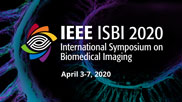Collection:

Breast tumor segmentation provides accurate tumor boundary, and serves as a key step toward further cancer quantification. Although deep learning-based approaches have been proposed and achieved promising results, existing approaches have difficulty in detecting small breast tumors. The capacity to detecting small tumors is particular-ly important in finding early stage cancers using computer-aided diagnosis (CAD) systems. In this paper, we propose a novel deep learning architecture called Small Tumor-Aware Network (STAN), to improve the performance of segmenting tumors with different size. The new architecture integrates both rich context information and high-resolution image features. We validate the proposed approach using seven quantitative metrics on two public breast ultrasound datasets. The proposed approach outperformed the state-of-the-art approaches in segmenting small breast tumors.
- IEEE MemberUS $11.00
- Society MemberUS $0.00
- IEEE Student MemberUS $11.00
- Non-IEEE MemberUS $15.00
Videos in this product
Stan: Small Tumor-Aware Network for Breast Ultrasound Image Segmentation
Breast tumor segmentation provides accurate tumor boundary, and serves as a key step toward further cancer quantification. Although deep learning-based approaches have been proposed and achieved promising results, existing approaches have difficulty in detecting small breast tumors. The capacity to detecting small tumors is particular-ly important in finding early stage cancers using computer-aided diagnosis (CAD) systems. In this paper, we propose a novel deep learning architecture called Small Tumor-Aware Network (STAN), to improve the performance of segmenting tumors with different size. The new architecture integrates both rich context information and high-resolution image features. We validate the proposed approach using seven quantitative metrics on two public breast ultrasound datasets. The proposed approach outperformed the state-of-the-art approaches in segmenting small breast tumors.
 Cart
Cart Create Account
Create Account Sign In
Sign In
